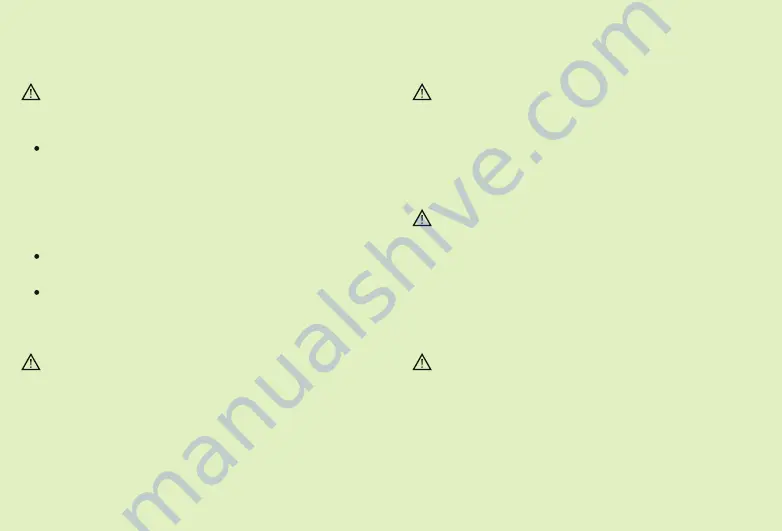
58
59
Portable RF communications equipment (including peripherals
such as antenna cables and external antennas) should be used
no closer than 30 cm (12 inches) to any part of the hearing
aids, including cables specified by the manufacturer.
Otherwise, degradation of the performance of this equipment
could result.
Hearing aids should not be fitted with domes / wax protection
systems when used by clients with perforated eardrums,
inflamed ear canals or otherwise exposed middle ear cavities.
In these cases, we recommend the use of a custom earpiece. In
the unlikely case that any part of this product should remain
in the ear canal, it is strongly recommended to see a medical
specialist for safe removal.
Avoid strong physical impacts to the ear when wearing a
hearing aid with customized earpiece. The stability of
customized earpieces is designed for normal use. A strong
physical impact to the ear (e.g. during sports) may cause the
customized earpiece to break. This may lead to perforation of
the ear canal or eardrum.
The following is only applicable for persons with active
implantable medical devices (i.e. pacemakers, defibrillators,
etc.):
Keep the wireless hearing aid at least 15 cm (6 inches) away
from the active implant. If you experience any interference, do
not use the wireless hearing aids and contact the
manufacturer of the active implant. Please, note that
interference can also be caused by power lines, electrostatic
discharge, airport metal detectors etc.
Keep magnets (i.e. battery handling tool, EasyPhone magnet,
etc.) at least 15 cm (6 inches) away from the active implant.
If using a Phonak wireless accessory, consult the chapter
“Important safety information” in your wireless accessory
user guide.
Use of accessories, transducers and cables other than those
specified or provided by the manufacturer of this equipment
could result in increased electromagnetic emissions or
decreased electromagnetic immunity of this equipment and
result in improper operation.
























